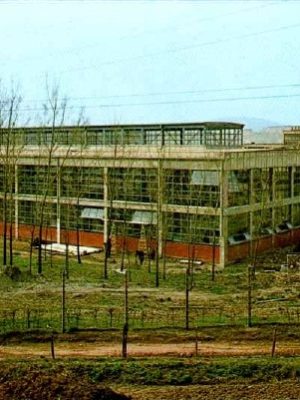About Visit Trepça
Welcome to “Visit Trepça”, a pilot project initiated by NGO 7Arte, dedicated to preserving and promoting the industrial heritage of Trepça.
We believe that the mining complex has the potential to be a valuable economic and cultural asset for the community, peace building and regional sustainability. Our innovative model incorporates socially and environmentally responsible heritage conservation, and we offer workshops, field guides and cultural events to provide a unique and interactive experience for visitors. We also provide opportunities for the community to be involved in the conservation, promotion and use of industrial heritage sites.
Our vision is to preserve and promote Trepça’s industrial heritage, create economic opportunities and empower the community through environmentally sustainable and socially responsible practices.
Join us in our efforts to preserve and promote this resource of cultural and historical value.
Our Story
“Visit Trepça” is more than just a pilot project it is a story of protection and promotion of Trepça’s industrial heritage. Our mission is to preserve and promote the mining complex, and its impact on the history, culture, economy and politics of the regional scene. We believe that this legacy is an important part of our cultural heritage and should be preserved for future generations to learn and appreciate.
We strive to create a social and cultural space where visitors can learn about industrial heritage and its potential, promoting sustainable tourism through quality service and respect for local communities, the environment and industrial heritage. We know that the protection and promotion of this industrial heritage is not an easy task and requires the support of all stakeholders, including the local community, government, educational institutions, mining, private sector, heritage conservation entities, organizations of culture and visitors.
We are working closely with all these shareholders to create a sustainable future for Trepça’s industrial heritage. We invite you to explore Trepça’s industrial heritage, learn about its history and significance, and discover its potential. We invite you to join us in this journey through time and help us in our mission to protect and promote the industrial heritage of Trepça for future generations to enjoy.
History of Trepça
The Trepça Mines is a large industrial complex in Kosovo, located 9 km northeast of Mitrovica, Kosovo with a rich mining history dating back to Roman times, (based on the document in the Dubrovnik archive of 1303). The modern exploitation of the mines began in 1927 by a London-based company, and Trepça quickly became a major industrial pillar of the Kosovo economy. Regular production began in 1930, and in the following years, investments were made in lead and zinc metallurgy, and other metal processing factories were built in different centres of Kosovo.
In the 1950s and 1960s, significant investments were made in the mining and metallurgy industries, and factories for processing lead, zinc, and other metals were built in Mitrovica, Peja, Gjakova, Prizren, Gjilan, Vushtrri, and Skenderaj. However, in the 90s, the production of Trepça mines declined due to the suppression of Kosovo’s autonomy and the expulsion of Albanian workers. After the declaration of Kosovo’s independence, Trepça came under the administration of the Kosovo Privatization Agency and later transformed into a joint-stock company with 80% of its shares owned by the government of Kosovo and 20% owned by the workers of Trepça.
Considering this major history and the impact of Trepça in the economical and socio-cultural field, we as Visit Trepça seek to promote the integrity and the industrial heritage of Trepça in creative ways to create opportunities to attract local and foreign investors in the near future. Except for underground values, it’s time to turn our attention to Trepça’s industrial heritage and collective memory. That’s why we believe that Trepça, with its rich mining history and not only, represents an important part of the cultural heritage of the region and Kosovo’s development itself. Keeping in mind that for two decades most of the buildings have been abandoned, there is still an opportunity for a decline in the preservation and promotion of this heritage which will lead toward the potential for sustainable development of the region through tourism and job creation.

















